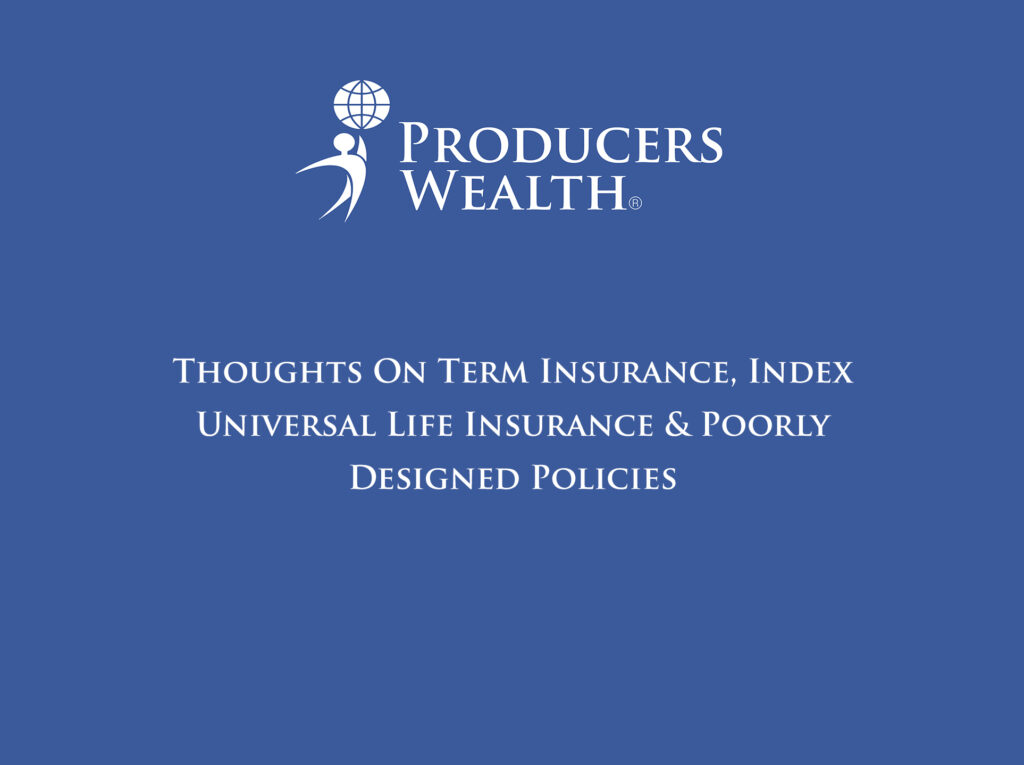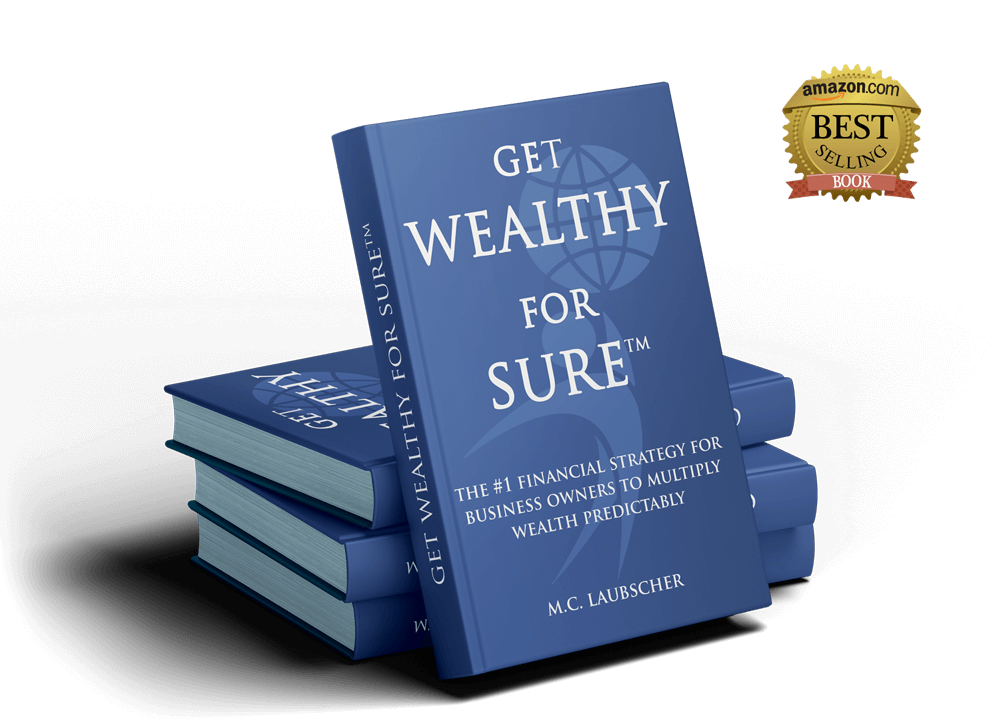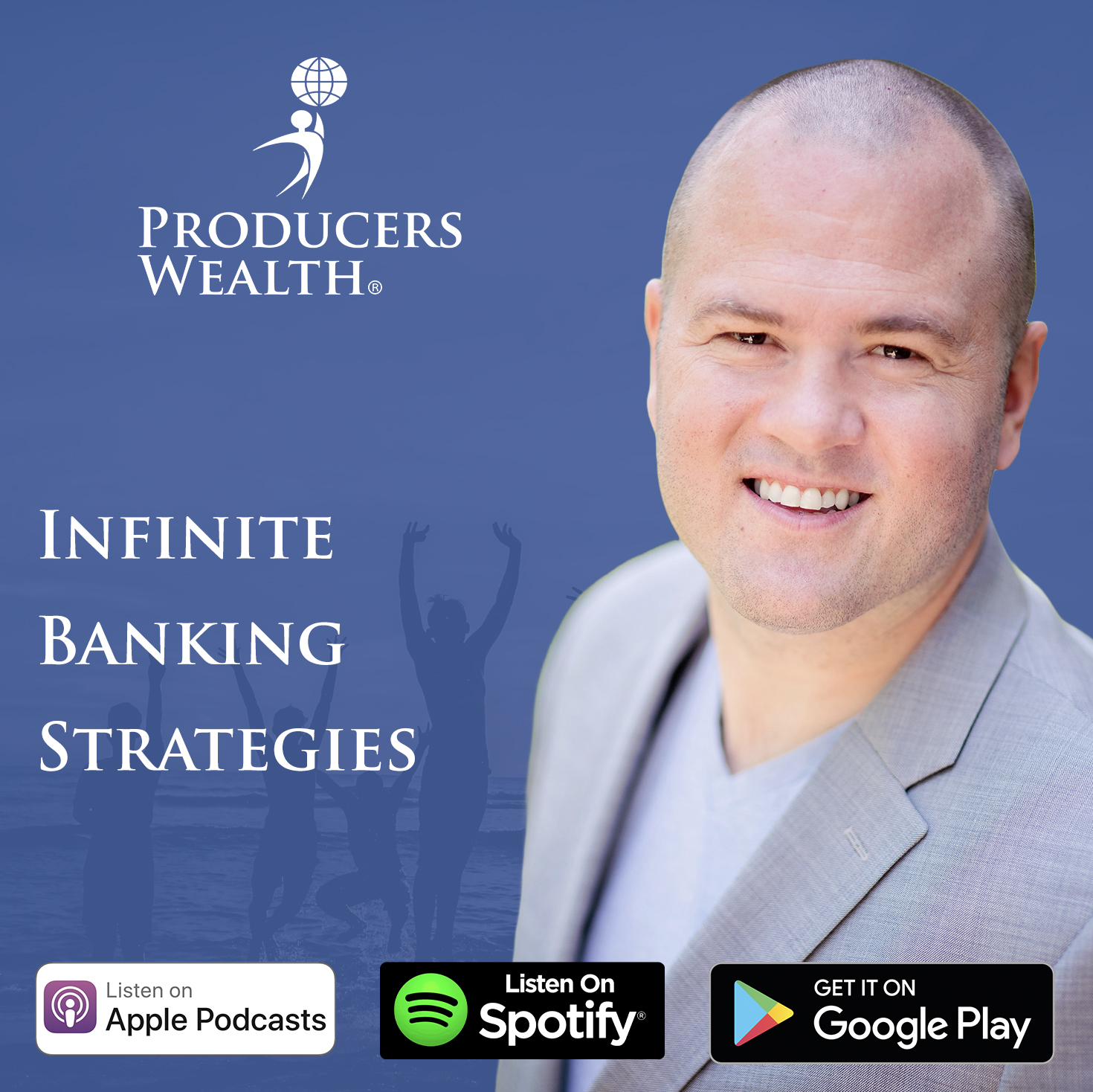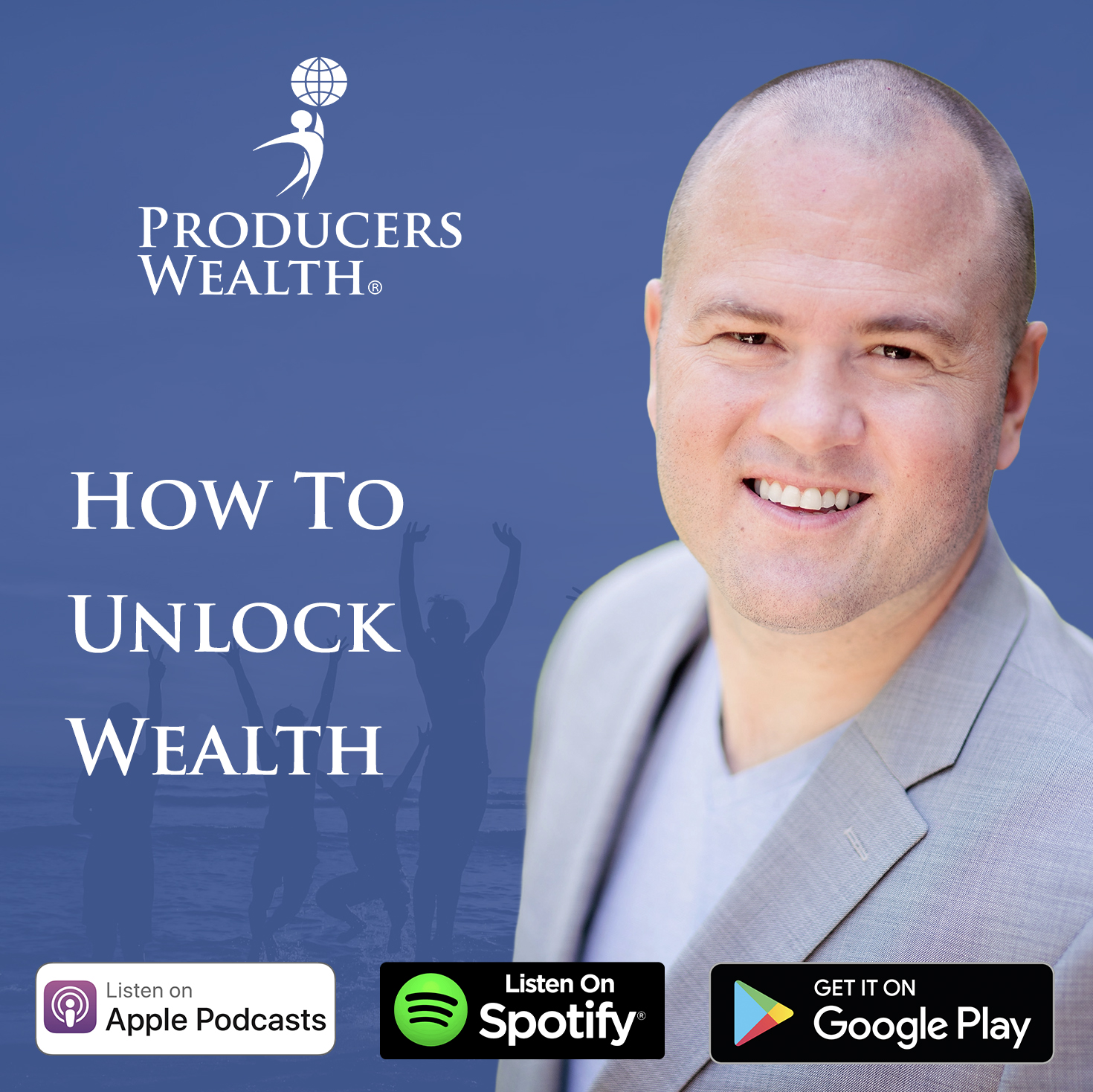
First, let’s break down what the Aligned Capital Strategy™ isn’t. It isn’t an IUL, a Variable Universal Life Policy, a Whole Life Insurance policy tied to a market index, Term Insurance, or any other exotic insurance vehicle.
We’re using the tried-and-tested, battle-hardened, dividend-paying whole life insurance policy with a mutual life insurance company that’s been around since the mid-1800s.
Should I Buy Term Insurance?
People often ask me, “Should I buy term insurance or whole life insurance?” You should probably have both!
Stop thinking in terms of product and start thinking in terms of strategy. With this banking strategy, we’re trying to maximize cash value and give you a warehouse to store your capital. A properly structured whole life policy allows you to maximize cash value and minimize the death benefit.
Meanwhile, term insurance solves a different problem. It provides a death benefit that protects your future potential income for your family in case of your death.
For example, if you make $1 million dollars a year and die unexpectedly in your 40s, that’s a $20 million loss to your family. If you have kids, this financial loss could impact their education opportunities and put a strain on your grieving spouse to make an income to make up for this loss.
If you buy convertible term insurance, you can protect this potential income for your family. With a convertible term policy, you can convert the policy to more dividend-paying whole life policies without medical underwriting, so it protects your ability to keep adding dividend-paying whole life insurance policies even if something happens to you health-wise. You lock in your health today. For example, if you receive a cancer diagnosis or develop cardiac problems as you age, you may find it impossible to be insured. A convertible term policy prevents you from facing this issue.
There is a purpose to both term and whole life. Having both protects you and gives you more options as your net worth grows.
Start thinking about strategy and not just products!
Universal Life Rescue
“You’ve got to know when to hold ‘em, know when to fold ‘em, know when to walk away, know when to run.” –Kenny Rogers
Universal life insurance is classified as permanent life insurance, but it is completely different from whole life insurance. The most well-known universal life policies are indexed universal life (IUL) and variable universal life (VUL).
Universal Life uses a renewable term with a bucket that is tied to something, depending on if it is an IUL or VUL. IULs are tied to a specific stock index, like the S&P 500, while VULs are tied to a specific stock portfolio that you can manage.
Dividend-paying whole life insurance policies with mutual life insurance carriers have been around since the mid-1800s, but universal life insurance was only created in the 1980s as a response to 401ks.
Before 401ks were invented, the average American never invested in the stock market–it was reserved for affluent individuals such as doctors, lawyers, and business owners. But when 401ks were rolled out, all of a sudden, the majority of the American working population changed from defined benefit plans to defined contribution plans and invested in the stock market. The stock market skyrocketed…
People no longer wanted to buy life insurance because it was seen as boring compared to the massive spike in the stock market. Life insurance carriers ended up designing Universal Life policies, which took a chassis of renewable term insurance and added a bundle of stocks or an index to it. People could now buy life insurance and invest in stocks at the same time, which was a very sexy sell.
Yet Universal Life policies are not the perfect savings vehicle…
Universal Life is based on a renewal term that renews every year at your current age, meaning that your insurance costs increase as you get older.
Also, Universal Life policies are tied to the market, which can go up, down, and sideways. There’s no guaranteed growth in this vehicle… If the market goes down, there’s no growth in the policy at all for that year.
There is a cap and floor in Universal Life policies, meaning that there is an upper limit to what you can earn. You don’t get the full benefit from the potential of where the stock market is going. If the stock market goes to 20% and your ceiling is 10%, you only get 10%. On the other hand, a floor places a limit on what you can lose. If the stock market is down 20%, rather than losing money, you just earn nothing that year.
But the cost of your insurance rises year by year, regardless of how the stock market is doing… Meaning you may be paying an exorbitant fee for an investment vehicle that earns you $0 that year.
In Universal Life policies like Index Universal Life and Variable Universal Life, there is a crossover point where the policy is not growing the capital in the policy but consuming it.
Essentially, buying Universal Life means you’re either:
1) Predicting that the stock market will be up every year… Yeah right. This would be like if the weatherman tried to make a forecast using tarot cards.
2) Accepting that you’re not going to get returns every year, even though you’re paying increasingly higher costs for this life insurance.
What starts to happen as people with Universal Life policies age is that the policies that were once affordable become prohibitively expensive. These people were promised by financial professionals in the 1980s, “Don’t worry about the cost of insurance rising each year. Your returns in the market will be so high that it’ll offset the cost of insurance.” Unfortunately, that’s not reality. The promised high returns never materialized, so the client can’t afford the premiums anymore and loses the policy.
The New York Department of Financial Services (NYDS) issued an alert to New Yorkers after receiving over 1400 complaints over a five-year period for universal life policies. Superintendent Linda Lacewell issued a statement:
“The Department has seen many cases of consumers who purchased universal life insurance and who made payments for years, thinking their premium payment would not change or that their coverage would remain in effect. But many found that their policies had lapsed (were no longer in effect) with little to no (cash) value due to declines in interest rates, market volatility, and other factors, or they were required to pay large additional premium payments to keep their coverage in effect.
The internal charges of universal life policies can increase every year. Ongoing premium payments, the policy’s existing cash value, and ongoing interest credits (or investment performance in the case of variable universal life insurance) are all used to cover the policies and internal charges which increase each year as the insured gets older, and can be very high in later years.”
Pick your favorite search engine and type in “universal life lawsuits.” You could spend hours in this internet rabbit hole, reading countless stories of real people who feel they were never told that these policies would one day become unaffordable.
So, if you have a Universal Life policy, what can be done?
Take a deep breath… There is a path forward.
It’s called the Universal Life Rescue.
You might know about a 1031 exchange in real estate. In life insurance, there’s a similar strategy called a 1035 exchange, where you can rescue your universal life policy when it becomes unaffordable. You can roll over the equity that’s left in the Universal Life policy into a dividend-paying Whole Life policy with a mutual life insurance carrier. When you do this, you can still have a tax-free retirement and a tax-free death benefit to leave a legacy to your beneficiaries–all with a locked-in insurance cost that will not rise over time. You’ll be able to pull from your new policy for a tax-free retirement without the burden of skyrocketing insurance costs that eat up the cash value of the policy.
Policy Clean Up Strategy™
Some people understand the difference between Universal Life and Whole Life. They go to a retail insurance professional or their financial advisor, completely informed on this strategy… Yet they end up with a policy structured completely wrong.
For the Aligned Capital Strategy™ to work, we want the lowest possible death benefit and the highest possible cash value. Yet an advisor or insurance salesperson who doesn’t understand this strategy might give you a $10 million death benefit with no cash value… If this happens, you’ve just bought a very expensive whole life insurance policy.
Not every life insurance professional is created equal. It’s important to find someone who focuses on life insurance as a savings vehicle, not on life insurance for the death benefit.
Asking your stockbroker to set up your life insurance policy would be like asking your dentist to do brain surgery. This is a specialized policy that not every financial professional has knowledge of.
If you end up with a policy with a high death benefit and low cash value, you might look at your policy and find you have zero cash value in year one. If this policy is set up correctly, you should have a significant portion of your premium already available in cash value from the moment you fund the policy. If you look at your policy two years in (or if you look at the two-year projections) and you have zero cash value, if you’ve been making your premium payments, something’s wrong. Your policy is not structured correctly.
A stock insurance company is not like a mutual insurance company. A stock insurance company is managed on behalf of the stockholders, so they have an incentive to attract people to buy their stock on the New York Stock Exchange and make risky investments.
Meanwhile, a mutual life insurance company manages the company in the best interest of its policyholders. If they do that, they’ll be able to make consistent dividend payouts, which attracts other people to buy their policies.
Would you rather buy a life insurance policy from a company that is incentivized to prioritize you or one that is incentivized to prioritize stockholders and leave you as an afterthought?
If you have a policy that has been set up incorrectly, we can rescue your policy by performing a 1035 exchange, moving the capital in your policy to a new policy that’s structured correctly and has cash value available for use immediately.
Even if you think you have something set up incorrectly, it’s not the end of the world. We can help “rescue” your policy and give you a second chance to succeed with this strategy.
But even if you’ve done everything correctly, it can still go wrong…
Imagine you went to the right company, went to an agent who knew what he was doing, set up the right vehicle, knew that it was structured correctly, and used it how you were supposed to use it. Then what happens? The life insurance carrier changes its organizational structure and goes from a mutual life insurance carrier to a stock insurance carrier.
This isn’t just a horror story… At the time this book was written, it just happened with Ohio National19.
If this happens to you, or if you were one of the unlucky people affected by Ohio National’s demutualization, it isn’t the end of the road. We can help you roll that policy over into a mutual life insurance carrier that has no intention to ever demutualize.
Watch all of our educational videos on Infinite Banking here.
Disclaimer and Waiver
Michiel Laubscher & Laubscher Wealth Management LLC is not an investment advisor and is not licensed to sell securities. None of the information provided is intended as investment, tax, accounting, or legal advice, as an offer or solicitation of an offer to buy or sell, or as an endorsement, of any company, security, fund, or other offerings. The information should not be relied upon for purposes of transacting securities or other investments. Your use of the information contained herein is at your own risk. The content is provided ‘as is’ and without warranties, either expressed or implied. Michiel Laubscher & Laubscher Wealth Management LLC does not promise or guarantee any income or specific result from using the information contained herein and is not liable for any loss or damage caused by your reliance on the information contained herein. Always seek the advice of professionals, as appropriate, regarding the evaluation of any specific information, opinion, or other content.





